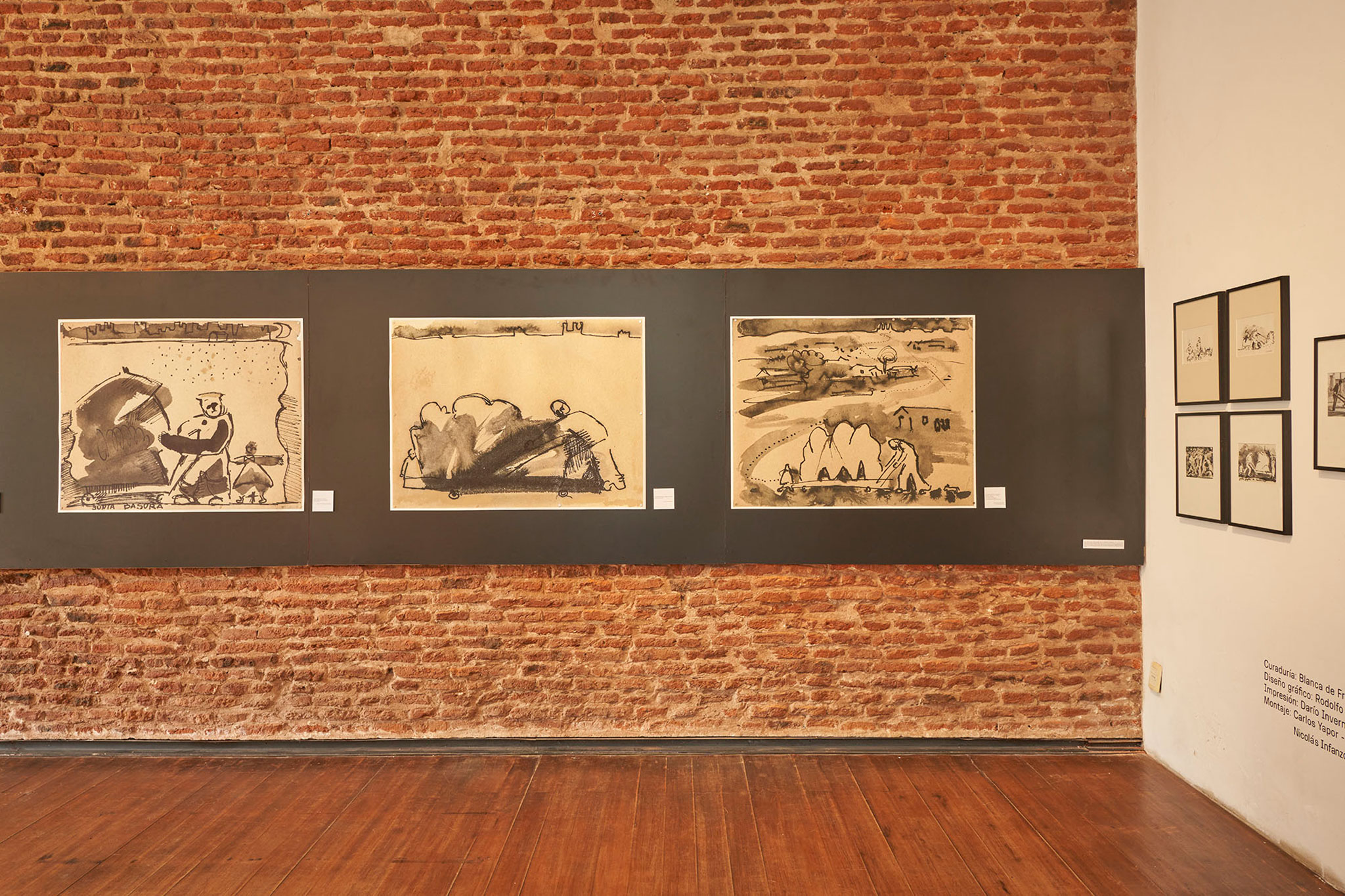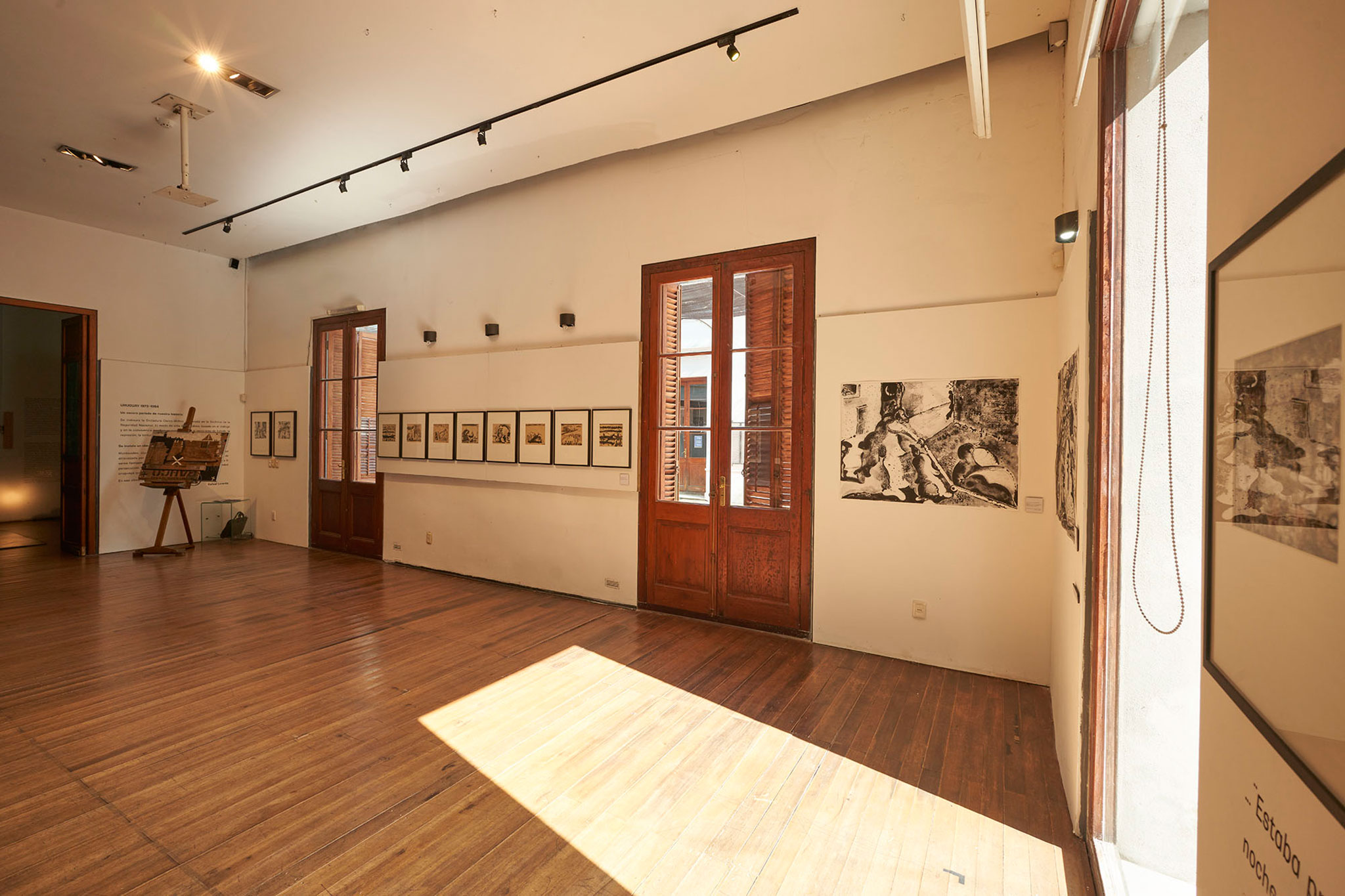Those years were also a time when drawing had a special relevance as a metalinguistic language, especially used by some architects in brilliant projects such as the case we are presenting. The context of crisis, of purposeful crisis and revision of Modernity, was covered by a context of reflection of views towards ways of seeing reality from a modern approach, and it would be unfair not to recognize how the influence of the announced and expectant bicentennial of the work by Giovanni Battista Piranesi in 1978 and especially the review of his series of "prisons" was especially relevant. (3)
Lorente's reworking of his own works, recovering them, revising them and changing their format, is only possible from a conscious involvement to intensify a brilliant discourse of memory, which time always seems to blur and in which memory is so necessary and opportune. realization and updating of Lorente, in times where the "fake news" miserably try to rewrite history.
Beyond technique, I find the brilliant forcefulness of memory recovery especially timely, the effort to look back and intervene again on some fresh works, intense at the time and now green again from a vision of more than four decades. As happened to Piranesi, it is especially interesting to note how the Venetian only reworked the etching edition of the prison plates made in 1749, redrawing them again on the same plates in 1761 to accentuate both a discourse of spatial modernity and of implicit criticism of the ways of punishing, which underlay the debate of the time.
The exceptional value of those works by Lorente, which were developed at a time of crisis in Modernity, has numerous examples of which, due to their coincidence in time, although with different techniques and narratives, were created at the same time, such as the works of the group of architects who founded OMA in 1975, later publishing in 1978, "Delirious New York" or those of Bernard Tschumi with the presentation of "The Manhattan Transcripts between 1977 and 1981". They are just a reflection of what was happening, but they are brought here by singular coincidence. As Umberto Eco would say, a necessary series of concomitant causes that explain a time and a reality, so pertinent again in our days.
In this context, the initial references commented by Lorente on the drawings of Goya and Rembrandt, whom Lorente had studied in his formative years in the chairs of José Gurvich and Guillermo Fernández, are especially relevant. Techniques in which the drawing and the stain were direct and spontaneous, arising without preparation or prior study.
In this exhibition, the works were scanned from their originals and reproduced again by means of Giclée printing (archival pigment inks) on 200-gram Bamboo Paper in approximate measurements of 1.05 x 0.85 meters, and later reworked or intervened in 2023 In addition, they are accompanied by texts by admired poets who contribute to the story.
NOTES.-
(2) Michel Foucault. Discipline and Punish. New Library, Madrid, 2012.
(3) José Juan Barba. Inventions: New York vs. Rem Koolhaas, Bernard Tschumi, Piranesi. Architecture Monographs 07, UAH, 2014.

Room view. "Del Terror. Uruguay 1973-1984" by Rafael Lorente. Photograph by Alvaro Zinno.

Room view. "Del Terror. Uruguay 1973-1984" by Rafael Lorente. Photograph by Alvaro Zinno.
URUGUAY 1973- 1984
The Civic-Military Dictatorship is established, protected by the Doctrine of National Security. The democratic way of life, based on dialogue and peaceful coexistence, is replaced by State terrorism, repression, torture, and political persecution.
A gloomy and distressing climate sets in:
Montevideo, a city swept by the winds, becomes a city traversed by fear. It is the city of shadows and suspicions, populated by ghostly beings, allegories, nightmares tinged with fear, and persecution. Juntapapeles represent a metaphor for Uruguayan society that wander aimlessly and without hope. It is in this climate that these drawings originate, made with Chinese ink and gouache with pen or brush on paper, work in 20 x 25 format around 1977.
45 years later, I returned to the drawings, enlarging them and partially intervening in them.
The works were scanned from their originals and reproduced by means of Giclée printing (archival pigment inks) on Bamboo Paper 200 grams in approximate measurements 1.05 x 0.85 meters. and intervened later in 2023.
The initial references were drawings by Goya and Rembrandt, whom I studied and dissected in my formative years in the chairs of José Gurvich and Guillermo Fernández. The drawing and the stain are direct and spontaneous, arising without preparation or prior study. I have wanted to accompany them with texts by admired poets who contribute to the story, describing the climate of anguish and oppression experienced.
The exhibition takes place during the months of April and May at the Museo de la Memoria de Montevideo in the framework of the 50th anniversary of the Coup d'état.

















































